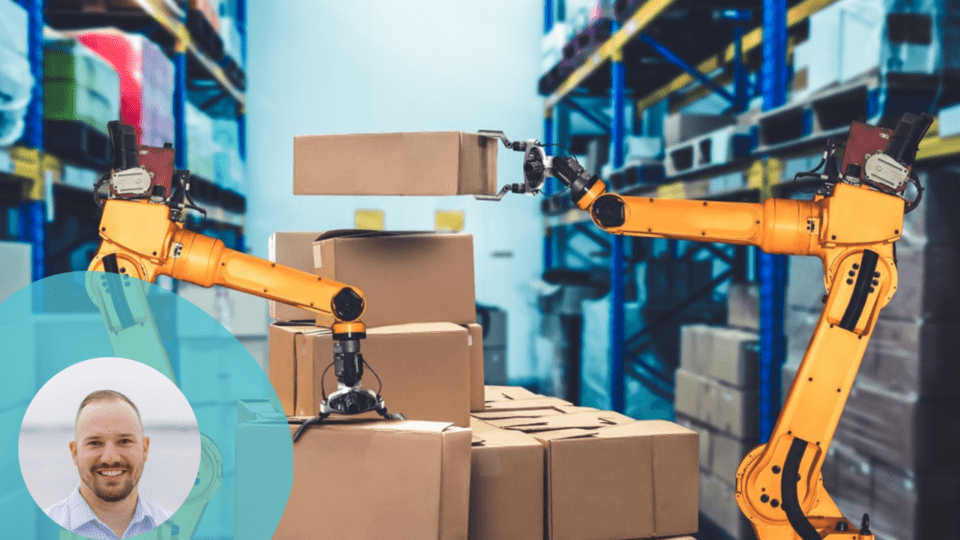According to Gartner, more than three-quarters of supply chain leaders are being asked to improve their customer experience (CX) strategies. A customer-centric approach to supply chain management is challenging; it requires a deep understanding of consumer expectations and behaviors, not just today but also for the foreseeable future.
Luckily, many supply chain leaders are seeing early success in using automation to meet heightened customer expectations. Not only do these technologies improve throughput in most cases; they also enable greater flexibility in meeting expectations related to fast shipping and free returns.
Consumer Behaviors are in Flux
Customers have drastically different expectations today compared to just five years ago, and these expectations are placing massive pressure on supply chains.
For starters, consumers’ appetite for digital commerce is skyrocketing. In 2020, global ecommerce sales reached $4.2 trillion. Just two years later, online sales jumped to $5.7 trillion — and by 2026, experts predict global ecommerce sales will hit $8.1 trillion. That’s a nearly 100% increase from the start of the pandemic when ecommerce began booming.
Additionally, shoppers increasingly demand ultra-fast deliveries, highly flexible return policies and more personalized online experiences. Only 14% of customers are comfortable waiting more than three days for their online order to arrive, while 38% say they typically expect to wait one day or less. These expectations have significantly impacted the same-day delivery market, which experts predict will grow nearly 20% year-over-year between now and 2028.
These shifting expectations aren’t reserved for traditionally digital products or industries like retail. In fact, perhaps the most dramatic changes are occurring in the grocery industry. In October 2024, digital grocery shopping jumped 28% YoY compared to October 2023. Third-party grocery delivery accounted for the bulk of these sales (46%), although pickup orders (40%) and ship-to-home channels (14%) also saw significant growth.
Each of these developments pushes the supply chain to work more efficiently.
Supply Chain Agility Remains Paramount
Calls for agility in the supply chain are nothing new. Top supply chain leaders know that flexibility and swift thinking are necessary responses to constant market fluctuations, especially since the pandemic introduced several novel challenges (e.g. massive parts shortages and shipping blockades).
The difference now is that massive demand has become business-as-usual, which means leaders must prioritize workflows and technologies that increase productivity year-round.
However, agility isn’t just about speed — it’s also about precision. Businesses that leverage real-time data analytics to assess inventory levels and market activities are more likely to understand the exact disruptions they should anticipate in the coming months. Even if their predictions are slightly off, they’ll be better positioned to navigate challenges with the right technologies and staffing.
Warehouses that adopt technologies focused on increasing productivity and efficiency also are poised to more reliably weather increased demand and other challenges.
Automation is Crucial to Meet Rising Demand
Warehouse automation has become a compelling answer to increased consumer demand. In 2023, the global warehouse automation market was valued at $23 billion. Statista predicts that by 2028, that number will reach a staggering $41 billion.
Robots in the warehouse solve a few key challenges, including:
- The need for increased throughput to meet demand
- Continuing warehouse labor shortages (as well as labor shortages in related industries, like trucking)
- The high cost of large-scale warehouse infrastructure
Warehouse robots can spike efficiency by working 24/7 without the need for breaks. Certain models also boast dual or multi-arms, enabling a greater pick-per-minute ratio than human laborers. Furthermore, by relying more heavily on automation, supply chain leaders can ease pervasive productivity gaps caused by exacerbated labor shortages. For reference, 70% of warehousing and transportation businesses in the EU report difficulties hiring enough skilled workers.
Many warehouse models also address larger-scale and longer-term issues in the industry, such as the high price of a large warehouse blueprint. Some warehouses can scale down their square footage by relying, at least in part, on automated solutions. Without the need to accommodate for heavy foot traffic, the look and feel of warehouses is slowly changing.
However, it’s critical to note that automated solutions in the warehouse cannot operate optimally without human surveillance. We’re not approaching a humans-free warehouse anytime soon (or, I’d wager, ever). Leading warehouse robots acknowledge this fact by operating with human-in-the-loop feedback, handling 90% of packages and parcels independently and then relying on human input for the remaining edge cases.
What to Expect from the Automation Market in 2025
In 2025, warehouse automation will become equally more advanced and accessible. As the cost of hardware decreases and software becomes further customizable, small and mid-sized businesses can embrace automation more deeply.
Here’s what you can expect over the next year:
- Increased automation adoption: The warehouse automation market will grow at a 15% compound annual growth rate (CAGR) between now and 2028, so anticipate larger-scale pilot projects for warehouse automation shortly and expansions of current adoptions.
- Better AI vision systems: We’re making impressive strides in AI vision daily. Onlookers should expect further refinements here as robots better perceive the context of their visual environment.
- The introduction of automation in adjacent industries: Self-driving trucks and other automated vehicles show promise in handling middle-mile deliveries. As consumer demand for fast, free shipping skyrockets, we should expect to see more of these vehicles on the road.
The supply chain of 2025 will look vastly different from today. One of the only facts we can be certain of is that robotics and automation will play a key role in helping warehouses meet sky-high consumer expectations.
Ryan Hannon is the Director of Customer Excellence at Plus One Robotics, bringing nearly 15 years of logistics experience from leadership roles at Pitney Bowes, UPS and NFI. In his current position, he focuses on optimizing client outcomes and driving operational success.




